|
When parents and teachers first think about fiction titles for children on the subject of music, the ones that first come to mind are likely to be picture books. But there are also a wide range of absorbing novels for middle-grade readers, each bringing the world of creating and performing music to life. Here are only a few: 1. The Trumpet of the Swan by E. B. White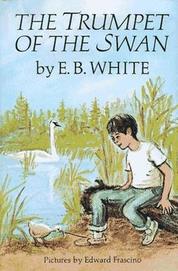 White is better known as the author of Charlotte’s Web and Stuart Little. However, The Trumpet of the Swan is a worthy addition to a young reader’s bookshelf in its own right. The novel’s protagonist is Louis, a young trumpeter swan that the author named after legendary jazz trumpeter Louis Armstrong. Louis is broken-hearted because he cannot make a sound. He wants to be able to communicate with Serena, a beautiful swan who has won his heart. When Louis learns to read and write, aided by his friend Sam Beaver, he only confuses his swan friends. But when Louis’ father steals a trumpet for him to play, the young swan shows that he is more than a voice. In this, his final book for children, White conveys the joy of music and the equal joyfulness of self-expression. Director Richard Rich created a 2001 animated film adaptation of White’s 1970 masterpiece. 2. Bud, Not Buddy by Christopher Paul CurtisThis Newbery Award-winning title also earned a Coretta Scott King Award for its vivid portrayal of the title character, an African-American boy living during the Great Depression. The 10-year-old Bud, whose mother died when he was only six, sets out on a train to find his missing father, as well as to track down the famous jazz musician Herman Calloway. As he learns about his family’s history, Bud also falls deeply in love with the rhythms of jazz. Curtis’ 1999 book was later turned into a jazz-flavored musical that has delighted young people all over the country in touring performances. 3. Hidden Voices by Pat Lowery Collins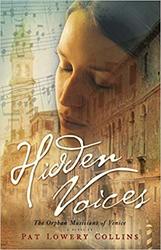 This 2009 historical fiction title for mature young people ages 12 and up is subtitled The Orphan Musicians of Venice. It is the story of three teenage girls who live in an orphanage in the early 18th century. However, this particular orphanage has built up an extraordinary program of music education, and that theme pervades the book. The three girls all begin their lives searching for love. They find it in their growing devotion to the musical arts under the tutelage of composer Antonio Vivaldi. But there is danger outside the orphanage walls. Each of the main characters experiences the complexities of life, love, and personal trauma in different ways. The book is a rich depiction of the capacity of rigorous musical study to strengthen the human spirit. 4. Second Fiddle by Rosanne ParryParry’s exciting, sensitive 2012 book is a look at the adventures of Jody, a 13-year-old girl in Berlin in 1990 in the wake of the fall of Communist governments across Eastern Europe and the destruction of the Berlin Wall. Jody, a violinist, lives with her family on an American army base. She and her two best friends are the members of an ensemble string trio who hope to perform in a competition in Paris. But their plans are derailed when they are the only ones who can rescue a young Russian soldier who becomes the object of attempted murder. As the girls try to save the young man by helping him reach Paris, they become embroiled in political intrigue and learn the strengthening and revitalizing power of the art they have chosen. 5. Echo by Pam Munoz Ryan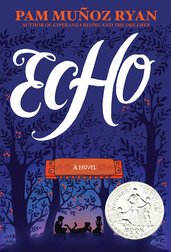 The harmonica is the star of this well-researched and deeply moving novel about musical vocation, identity, courage, and compassion. Ryan follows the story of a particular harmonica through the lives of multiple children at multiple times and places. Their musical stories touch on the tragedies of the Holocaust, the internment of Japanese-Americans in World War II, the prejudices against Mexican migrant laborers in mid-20th century California, and the harsh lives of children in an orphanage. Ryan received a 2016 Newbery Honor Award for the book. The audiobook version of Ryan’s beautifully-written historical and contemporary fable is made richer with accompanying musical performances. 6. I Am Drums by Mike GrossoIn Grosso’s 2016 book, middle school student Sam not only plays the drums, she lives the drums, hearing the beat even in her sleep. Unfortunately, her parents don’t have the money to support her dreams by buying her a drum set of her own. Additionally, her school loses its music program due to budget cuts.
Sam creates a drum kit out of old magazines and books while coping with her father’s job loss and her parents’ constant arguing and lack of understanding of her passion. Her love of music prompts Sam to test the limits of what she is prepared to do to achieve her goals. She even lies to her family about starting a lawn-mowing venture to earn money. The author, a music teacher himself, creates a story based on the real dilemmas many kids like Sam face. He establishes reader empathy for his central character, her missteps and successes, and her dream to be a musician. At the center of today’s symphony orchestra is the string section. The family group of stringed instruments includes the violin, the viola, the cello, and the double bass. This group’s defining features are strings, frets, and bows. The word “violin” is actually a diminutive term for “viola,” meaning that the instrument descends from the older viol family. The original Italian term for the latter instrument is “viola da braccio,” or “viol for the arm.” Held against the musician’s shoulder, this is the type of viol from which the modern viola developed. The following are some interesting facts about the always lyrical, expressive, and resonant violin: 1. It came into being during the Middle Ages.Some experts believe that the introduction of the violin into Europe began with the stringed instruments of Arab-ruled Spain in the early Middle Ages. The instruments of the cultures of the Iberian Peninsula at the time included the rabab and its descendant, the rebec. The latter had three strings, was shaped like a pear, and was often played with its base resting against a seated player’s thigh. Musicologists consider Central Asia the most likely ultimate origin for the bowed chordophone instruments that began to proliferate throughout Europe and Western Asia by the early Middle Ages. The Polish fiddle may be one of the direct progenitors of the violin. In addition to the rebec, other medieval instruments that led to the development of the violin included the lira da braccio and the fiddle. The shape of the lira da braccio, in particular, with its arching body and low-relief ribs, prefigured today’s familiar violin. The lira da braccio’s shallowness of body likely led to the addition of a sound post, a device particular to the violin and later to the viols. The sound post is a small, vertically positioned dividing wall that separates the instrument’s front and back in order to keep the pressures exerted on the strings from causing the belly arch to cave in. Musicologists point out that this sound post contributes to the richness of the violin’s lilting, singing tone, as it harmonizes the workings of the body and strings as a unit. By the end of the medieval period, a fiddle of a type that would be recognizable today appeared on the scene. 2. The Amati family refined the violin during the Renaissance.According to paintings of the time, violins with three strings were being played by at least the early 16th century. Lute-maker Andrea Amati of Cremona in Italy produced several violins with three strings at about this time. At about the middle of the 1500s, violins with top E-strings had appeared. It was then that the cello—or “violoncello”—and viola also branched out of the viol family. Bowed instruments developed further in tandem with the Renaissance, particularly in Italy, with the Amati family being the most famous violin-makers of the 16th and early 17th centuries. The Amatis’ great innovation was the development of the thinner, flatter, violin body that produced a particularly appealing sound in the soprano register. 3. Stradivari established impeccable standards.While the Amatis played a major role in standardizing the general size and proportions of the stringed instruments we know today, one of their apprentices, Antonio Stradivari, would carry forward and expand on their technical skills. By the late 1600s, Stradivari had created a wholesale alteration in violin proportions through elongating the instrument. His now-standard form for its bridge and general proportions has rendered it capable of producing sounds of extraordinary power and range. At one time, it was believed that Stradivari’s violins drew their range and depth of tone from the secret formula he used for their varnish. No one, then or now, has ever figured out that formula. Today’s music historians note that the distinct sound of Stradivari’s violins most likely derived from the quality of the vibration facilitated by thicker wooden top and rear plates, as well as from the configuration of miniscule pores in the wood. However, many experts additionally point out that the master’s varnish did indeed contribute to the overall quality of the sound. 4. Virtuosity became the goal for violinists in the 19th century.Into the 1800s, violin-makers continued to try new ways to construct the instrument and refine its proportions, angles, and arches. At this time, the repertoire for solo and accompanied violin began to require high levels of skill and dexterity, and violinists such as Niccolò Paganini became known for executing tremendously complex passages. Paganini, who cultivated the image of the composer-musician as a wild Romantic, amassed an enormous and devoted fan following in his day. Such virtuosity was further enhanced when Louis Spohr invented the chin rest sometime around 1820, thus enabling a player to more comfortably hold and manipulate the instrument. The addition of a shoulder rest additionally contributed to this ease of handling. 5. There are many modern-day virtuosos.A number of 20th- and 21st-century players have rivaled Paganini in skill and popularity. Among these are the child prodigy and older grandmaster Yehudi Menuhin, who died in 1999 at age 82. Menuhin’s technical proficiency dazzled audiences, and he became known for his championing of contemporary composers such Béla Bartók. Itzhak Perlman, born in 1945, remains one of the world’s finest living violinists, known for his focus on detail. While still in his teens, Perlman made his debut at Carnegie Hall. A Grammy Award winner for lifetime achievement, he has since played with jazz and klezmer groups, and performed music for motion pictures. In addition to his work as a conductor, he has also served as a teacher of gifted young musicians. 6.Today, the violin encompasses a mosaic of musical cultures.Like Perlman, today’s violinists perform not only classical music, but also an entire world of country, bluegrass, folk, rock, and world music. Throughout North Africa, Greece, the Arab world, and the southern part of India, the violin and viola continue to be very popular. The Roma have a long tradition of using the violin in communal music-making, as do the Jews through the tradition of klezmer. The violin remains widely used in American and European folk compositions as well.
The lilting, lyrical tones of the flute make it one of the most popular instruments for young musicians and one of the easiest to recognize in an orchestra. Experts recommend that you begin to teach the flute and other woodwinds when your child is old enough to have developed adequate lung capacity—typically by ages 7 or 8—and the dexterity to hold and manage an instrument correctly. The flute, which is also one of the oldest-known instruments, has a fascinating history, as it has developed over time: 1. Ancient OriginsThe flute, which is the first-known wind instrument, was used by Stone Age people. Flutes have been fashioned from animal bone, wood, metal, and other materials. The oldest-known example of a Western-style, end-vibrated flute dates back at least 35,000 years ago. Unearthed near the town of Ulm in Germany, the flute was made from the bone of a griffin vulture. Early flutes tended to be end-blown, played in the same vertical position as the recorder is today. Later evolutions resulted in the side-blown—or transverse—flute attaining the form we now know today. Ancient Sumerians and Egyptians used flutes fashioned from bamboo, eventually adding three and four finger holes that increased the number of individual notes they could play. Ancient Greek flutes were end-blown and had six finger holes. The Romans are known to have played transverse flutes, which may have been introduced to Western Europe by the Etruscans as early as the 4th century BCE. The ultimate source of the transverse flute was likely Asia, reintroduced to early medieval Western Europe via the Byzantine Empire. 2. Medieval and Renaissance Pipes, Fifes, and FlutesMedieval flutes, which were typically wooden, with six open finger holes and no keys, were often paired with a drum as the minstrels’ portable pipe-and-tabor set. The Renaissance witnessed the development of flutes, often made from boxwood, with two groupings of finger holes and a slimmer cylindrical bore. While this new design made the tone lighter and more airy and delicate, the sound from the lower register became more problematic. Military bands continued to use the smaller fife. 3. The Flute Replaces the RecorderThe transverse flute began to displace the recorder in the middle of the 17th century, and before another century had passed, it had moved into a place of popularity among a wide range of composers. During this period, changes in the flute’s size and shape conferred upon it a greater musical range. Its larger chromatic range made it capable of evoking a rich palette of moods, from the pastoral to the sprightly, to dramatic declarations of love and soaring flights of fantasy. In the Baroque period, French musical instrument makers—the Hotteterre family chief among them—introduced major changes. They included the creation of three joints for the instrument, increasing to four joints by the early 18th century. The Baroque flutes also featured a bore that tapered toward the foot end. The alterations permitted cross-fingering in order to play in various keys. They additionally made upper-register volume and tuning better. New sliding joints permitted the flute to be tuned in tandem with other instruments of an ensemble. The designation “flute” in compositions from the Baroque period typically continued to mean the recorder, with the transverse flute becoming commonly known as the “German” flute. 4. A Classical FlourishingBy the early 1800s, the flute had six keys and would soon add two more. These classical flutes, like their earlier Western European counterparts, were usually made of wood with a cone-shaped shaft and six keys. The flute as we know it today took its modern form at the time of the Classical period in music, the era of Haydn, Mozart, and Beethoven. During this time, the flute became an integral part of the symphony orchestra. 5. Baroque and Classical Music for FluteIn 1681, Jean-Baptiste Lully became the first to write the transverse flute into an operatic orchestra. Over the Baroque and Classical periods, a number of composers created compositions showcasing the capabilities of the flute. Early 18th century composer Georg Philipp Telemann’s Twelve Fantasias for flute without bass presents flutists with passacaglias and fugues that demonstrate the many possibilities of the instrument, including the “false polyphony” resulting from rapid changes in tone and subject, with the high and low registers alternating. Mozart wrote his Flute Concerto in G major, No. 1, K. 313, which contains a liltingly expressive Adagio movement, encased by lively Allegro and Rondo movements. Beethoven composed numerous works for the flute. His Serenade in D major, Op. 41, is composed for flute accompanied by piano. The work is a series of six subsections, by turns serene and vivacious, introduced by an overture. Its Andante con variazioni e coda has earned praise from musicians as a supreme example of the composer’s art. 6. Boehm’s Lyrical RevolutionToday, flutists use the term “Western concert flute” to describe modern flutes descended from Western European models. This style of flute is also known as the “C” flute because it is usually tuned to that note on the scale, or as the “Boehm flute,” due to the influence of Theobald Boehm on its evolving design. The German-born Boehm, whose long career spanned most of the 19th century, was the greatest influencer of the way the modern flute looks and sounds. A flutist himself, as well as a goldsmith and artisan, Boehm produced a series of significant innovations in the design of the instrument beginning in 1810. Building on previous ideas of other instrument-makers, Boehm also adopted the idea of using larger tone holes, as well as the use of ring keys. In his iterations of the flute in the 1830s, Boehm provided tone holes organized to create the best possible acoustic values. He also linked the keys through a series of movable axles. He also adapted newly invented pin springs to his instrument and put felt pads on its key cups in order to impede the unnecessary escape of air. He altered the silhouette of the embouchure—the mouth hole—to make it rectangular, and constructed the instrument of German silver, for its superior acoustic qualities. By the close of the 1870s, Boehm was offering his “modern silver flute.” Over the course of his career, he produced a revolution in the way flutes were designed, constructed, and standardized. His basic flute design remains largely in use today. The Library of Congress holds a number of examples of Boehm’s flutes in its Dayton C. Miller collection. 7. Today’s Flute—An Ancient Instrument with a New VoiceModern flutes typically have 16 keyed openings, corresponding to an even-tempered octave. Many contemporary flutes possess a range of three octaves. Today’s flutes are typically made from blackwood or cocuswood, or from silver or a silver and nickel-silver alternative.
Current members of the flute family include the piccolo, the concert and bass (or contrabass) flute, all in the key of C, in increasingly lower registers and with different ranges. The lowest note on the hyperbass flute has a frequency of only about 16 hertz, considered lower than the lower limit of human hearing. Flutists today have a rich repertoire of solo and ensemble pieces to choose from, including works by earlier composers such as Carl Philipp Emanuel Bach, a well as 20th century masters such as Claude Debussy, Maurice Ravel, and many others. When teaching music to young children, educators and parents today can choose from a wide range of colorful, fun, and fascinating picture books that will enhance their lesson plans. Here are only a few of the best books for preschoolers and early elementary students that offer lilting texts and multi-layered pictures to help to convey the joy found in music. 1. Music, Music for Everyone
2. My Family Plays MusicMy Family Plays Music, written by Judy Cox and illustrated by Elbrite Brown, showcases the lives of an entire family of musicians in bright and lively cut-paper pictures. Educators have praised the book as a first introduction to the range of musical instruments children can play. Published by Holiday House, it received a Coretta Scott King/John Steptoe Award for New Talent Illustrator after its original publication in 2003. The heroine of the story practices making music with a variety of instruments alongside different members of her family. She tries out the triangle with her father and his string quartet, joins her aunt’s jazz band playing the woodblock, and more. 3. Kat Writes a SongKat Writes a Song, written and illustrated by Greg Foley, is a story of inspiration, creativity, and the ability of music to brighten anyone’s day. Published by the Little Simon imprint in 2018, the book stars Kat, a kitten who is feeling down and lonely on a rainy day. She writes and sings a song, and finds the clouds and rain going away. But the magic really begins when she decides to share her song to lift the spirits of her friends and others in the neighborhood. 4. Barnyard Boogie!
5. Music Class Today!Part of the Music for Aardvarks series, Music Class Today! was written by David Weinstone and illustrated by Vin Vogel. Published in 2015 by Farrar Straus Giroux, Music Class Today! is the simple story of a music class, one shy student, and how to find the inner strength to try new experiences. The lively text and illustrations bring the excitement of making music as a group to life. In addition to his work as a picture book author, Weinstone created the imagination-fueled Music for Aardvarks CDs and classes for young children. 6. Miguel and the Grand HarmonyThe making of Miguel and the Grand Harmony brought together Newbery Award-winning writer Matt de la Peña and Pixar artist Ana Ramírez to create an original work of art based on characters from the beloved movie Coco. The book, published by Disney Press in 2017, tells the story of Miguel. Prohibited from making music, the young boy practices on his homemade guitar in secret. He gets help from the spirit of La Música, who creates the right sequence of circumstances that will allow his dream to come true. The book’s rich illustrations celebrate music’s ability to be a creative force that enhances life’s journey. 7. Geraldine, the Music Mouse
8. Zin! Zin! Zin! A ViolinAnd finally, there is Zin! Zin! Zin! A Violin. The now-classic picture story treatment of the instruments of the orchestra was written by Lloyd Moss, illustrated by Marjorie Priceman, and published by Simon & Schuster Books for Young Readers in 1995.
This Caldecott Honor book spotlights the distinctive voices of 10 different instruments in catchy and musically rhyming words set amidst a swirl of saturated pinks, golds, and other colors. It also serves as a counting book, as one by one the instruments and their musicians take the stage. Musicologists define perfect pitch, also known as absolute pitch, as the ability to independently identify the pitch of any musical note, or to reproduce any specified note. Some studies have indicated that perfect pitch is relatively rare; only about one person in 10,000 possesses it. Here are a few facts and theories about perfect pitch, and how human beings—particularly children—might be taught to develop it. 1. What is the science behind musical pitch? Every sound consists of sound waves. These vibrations reach the ear, and then the brain, via nerve impulses. The unit of measurement for sound waves is the hertz, with a single wave per second designated as one hertz, 100 wave vibrations per second as 100 hertz, and so on. The human ear can perceive sound waves vibrating along a scale of approximately 20 to 20,000 hertz. When musicians talk about the pitch of a sound, they are referring to the sensation of its frequency. Lower frequencies equal lower pitch, and as the frequency gets higher, so does the pitch. A highly trained musician with excellent pitch can distinguish very subtle differences between sounds that vary by as little as 2 hertz. 2. What’s the difference between perfect pitch and relative pitch?People with perfect pitch know, for example, that the first musical interval in the children’s song “Twinkle, Twinkle, Little Star,” represents a perfect fifth on the scale, and that the iconic vocal “way up high” jump in Judy Garland’s rendition of “Somewhere Over the Rainbow” is the interval of a major sixth. A musician with perfect pitch can instantly determine the relation of any one note on the scale to any other. He or she can also reproduce notes at specified intervals without looking at the instrument being played or any other external source. With relative pitch, a musician can identify the intervals between notes, but not necessarily the notes themselves. Most experts believe that perfect pitch cannot be taught; however, most musicians can develop some degree of relative pitch through application and study. Experts point out that perfect pitch and relative pitch are complementary, and that it is possible to possess both. One way of describing the difference is to say that perfect pitch is analogous to creative, artistic, “right-brained” ways of understanding the world. Relative pitch is in line with more “intellectualized,” “left-brained” means of perception. After developing relative pitch, musicians are better able to name and describe the elements of music verbally, whereas those with a sense of perfect pitch have an instant, innate understanding that transcends words. 3. Which famous musicians have had perfect pitch?
5. Pitch can be associated with meaning.Other techniques exist for assisting young children in the development of relative pitch. Children can listen to a story about, for example, animals of different sizes and temperaments, and can learn to associate a specific pitch with each one. For example, one instructor would ask children to imagine a big, powerful elephant lumbering alone. As the image unfolded in the children’s minds, the instructor would play a combination of low notes on the piano. Then a monkey would appear in the story, accompanied by notes in the piano’s middle range. A series of lilting high notes would go along with a section of the story about light, high-flying birds. 6. New research suggests perfect pitch can be learned. It was a long believed that perfect pitch was inborn and not able to be taught or learned, but some contemporary researchers believe otherwise. Diana Deutsch, a University of California, San Diego, psychology professor and researcher into cognition and musical ability, believes that the secret lies in helping young children make connections between pitch and meaning. Dr. Deutsch, known for her discovery of a range of musical illusions and paradoxes, has focused in particular on the phenomenon of perfect pitch. Dr. Deutsch has written that all people are born with an inherent form of perfect pitch, but that most never learn to recognize or use it. People may recognize a note but be unable to name it. But she also believes that timing is everything. If a child has not had in-depth musical training before beginning elementary school, he or she is less likely to discover that hidden sense of perfect pitch. 7. The identification of tritones can help develop perfect pitch.Dr. Deutsch grounds her theory about developing perfect pitch partly on her work with musical illusions and conundrums, including her discovery of the “Tritone Paradox.” A tritone indicates the interval where an octave—a series of eight notes—divides evenly into two halves. An example: C and F-sharp form a tritone pair. Every musical note has a companion, as in the C-F-sharp pairing, located precisely one-half octave away. The paradox lies in the fact that individuals may hear the same tritones as either ascending or descending when they are played in sequence. People are often astonished to find that others hear the opposite. Dr. Deutsch’s research showed that everyone has some ability to remember these fixed tritone pairs, which she defines as one innate form of perfect pitch. She further discovered that working on this type of fixed pitch just might enable an individual to go on to acquire perfect pitch, if such instruction starts early enough. 8. Speaking a tonal language may help with the acquisition of perfect pitch.Native speakers of tonal languages, such as Vietnamese and Chinese, seem to have a particular advantage when it comes to developing perfect pitch. Dr. Deutsch theorizes that this is because their brains were wired around distinguishing fine gradations in spoken tones, and because perception of tritone patterns in these cultures tends to be the same for all speakers. By contrast, individual speakers of American English tend to have their own individual perceptions of whether any given tritone is ascending or descending. 9. Creating a DIY tonal language may help young children develop perfect pitch.Dr. Deutsch suggests that parents who want to give their young children perfect pitch try to recreate a tonal language at home. An easy way to do this is to label each note on a keyboard with a different sticker showing an animal. For example, every C note can be labeled with a dog, every F-sharp with a cat, and so on. Children can then more easily mentally associate each tone with a meaning. As they learn the abstract notes of the scale, they will substitute them for the animal pictures.
Across the world, dedicated musicians have helped nurture the talents of new generations of young performers in the classical tradition through a variety of youth symphony orchestra experiences. These organizations, regardless of their location, share a set of common goals: to train young men and women in the rigors of musical interpretation while helping them develop vital life skills such as cooperation, self-discipline, goal-setting, and professionalism. Here are summaries of the histories and work of only a few of the world’s many youth orchestras active today: 1. The Children’s Orchestra SocietyIn 1962, Dr. Hiao-Tsiun Ma established the Children’s Orchestra Society (COS) as a means of teaching children to appreciate and perform music, and to understand the values of collaboration and teamwork. Since then, the New York-based nonprofit organization has transformed the lives of numerous young people by helping them gain skills in musicianship and performance that have had lasting positive effects on their lives. Thanks to the training COS offers, young musicians can perform at high levels as members of groups dedicated to classical and chamber music, and play alongside established adult performers. The COS continues to operate under the principles of its founder. Dr. Ma, a musicologist and teacher in his native China and in the West, was the father of world-renowned cellist Yo-Yo Ma and of Dr. Yeou-Cheng Ma, who currently heads the COS. The society’s child-centered philosophy aims to provide a supportive environment optimized for the unfolding of each student’s own innate musical gifts, with parts written specifically to enhance individual competencies. 2. The Los Angeles Youth OrchestraThe Los Angeles Youth Orchestra was founded in 1999. Originally funded with grant monies from the local Jewish Community Federation, the organization—then known as the Los Angeles Jewish Youth Orchestra—focused on Jewish-themed liturgical and other music. Its mission soon widened to include performance of the full range of music from the world’s musical heritage, both classical and contemporary. Under the leadership of composer and music director Russell Steinberg, who arranged several symphonies by Franz Joseph Haydn and created original compositions specifically for the group, its musicians’ talents blossomed. As its repertoire grew and diversified, so did the orchestra’s membership. By 2003, its performers included some five dozen students from a variety of backgrounds and representing about 50 Los Angeles-area high schools. In acknowledgement of this broader focus, that year Steinberg renamed the group the Los Angeles Youth Orchestra. In 2008, the group earned official nonprofit status. Since its debut, the LAYO has hosted West Coast and world premieres of a number of original compositions. Its schedule includes regular public performances, and it has planned a 2019 Argentina Tour, in which its members will perform four concerts in Buenos Aires, including an outreach concert in one of the city’s most poverty-stricken communities. 3. Chicago Youth Symphony OrchestrasThe Chicago Youth Symphony Orchestras has served the community as a nonprofit group providing music and performance education since 1946. Today, CYSO works with hundreds of young people from the primary grades through high school. These youth take part in a variety of ensembles including four full-scale orchestras, several string orchestras, jazz and steel orchestras, and chamber music groups. Prominent Chicagoland professional musicians serve as teachers and mentors to the youth as they train to present major performances. Former CYSO participants have gone on to distinguished careers in music and other fields. Many today perform in well-known orchestras and other ensembles around the world, while others have used the skills they learned with CYSO to become lawyers, physicians, and community leaders. Thanks to CYSO’s Community Partnership Programs, more than 8,000 young people have had the opportunity to gain musical training through neighborhood-based groups and through other venues over the course of the 2017-2018 season. These programs focus particularly on serving youth in under-resourced parts of the community, with the goal of making a strong music education a core part of the life of every Chicagoan. 4. The New York Youth SymphonyThe New York Youth Symphony was founded in 1963 to highlight the talents of young people ages 12 to 22. Today, after winning numerous awards and earning praise as one of the most prestigious of the world’s youth orchestras, the symphony continues its program of preparing young people for careers in music, and for becoming lifelong students of—and advocates for—the art. Over the half-century and more of its existence, the New York Youth Symphony has benefited from the guidance of world-renowned music directors. It has also served as the training ground for some of today’s most in-demand composers and performers, and has for almost 35 years actively commissioned new compositions from young musicians themselves. 5. The Recycled Orchestra of CateuraIn Paraguay, young people with few material resources have established themselves as a remarkable orchestra playing exquisite music on instruments made from garbage. The 2016 documentary film Landfill Harmonic takes viewers inside the creation of this extraordinary youth orchestra, founded by renowned maestro Luis Szaran and led by music director Favio Chavez for the benefit of the children living in the slum of Cateura, Paraguay. The orchestra has thrived thanks to the dedication of Szaran, Chavez, and a local recycler whose family has sustained itself by collecting and recycling trash. Now, the area’s youth have become skilled musicians playing violins, double bass, wind instruments, and more, all made from scrap metal, old barrels, discarded spoons and buttons, and other trash. And Szaran’s organization, Sonidos de la Tierra, or “Sounds of the Earth,” continues as an instrument workshop and worldwide musical touring ensemble supporting the orchestra. While numerous examples of lively, well-crafted contemporary music composed especially for children exist, educators and parents also have at their disposal a wide range of classical compositions that can foster a love of music. While not written specifically for young people, a variety of individual short works—and movements or pieces of longer works—from the classical repertoire have proven over the years to be as enticing for kids as they are for adults. These works include pieces by composers ranging from the towering, august Ludwig van Beethoven to popular 20th-century masters such as Aaron Copland. However, as diverse as these composers are, their compositions all feature strong melodic lines and rich tonality that can paint colorful stories across the canvas of a young listener’s mind. The following are a few suggestions for album collections, composers, and individual recordings that can enrich any child’s musical education: 1. Beethoven Lives UpstairsBeethoven Lives Upstairs is only one in the Classical Kids series of CDs and DVDs showcasing child-friendly pieces by great composers while emphasizing that these artists were also real-life human beings. This particular recording offers movements from Beethoven’s Symphony No. 5 in C minor and Symphony No. 7 in A major, as well as pieces such as the composer’s Flute Serenade (Opus 23) and his popular piano composition Für Elise. The children’s media review organization Common Sense Media has praised this series as particularly suitable for kids ages 5 and up. The website’s review of the video version of Beethoven Lives Upstairs notes the vividness and accessibility with which it portrays the composer’s complex personality and depth of artistic expression. 2. Classical Wonderland - Classical Music for Children The album Classical Wonderland - Classical Music for Children, produced by Sony Music, offers a compilation of 11 recordings by various artists. Selections range from staples of the classical repertoire such as “The Flight of the Bumblebee” from Nikolai Rimsky-Korsakov’s opera The Tale of Tsar Saltan to “The Swan,” one of the creatures portrayed in The Carnival of the Animals by Camille Saint-Saëns. The former piece depicts the antics of the prince when he disguises himself as a bee, while the latter paints a musical portrait of one of nature’s most graceful and elegant creatures. 3. My First Tchaikovsky AlbumAvailable online at the Met Opera Shop and in other venues, My First Tchaikovsky Album, from Naxos Records, offers kids some of their favorite melodies from the composer’s Nutcracker Suite and excerpts from The Sleeping Beauty, Swan Lake, and other works. A companion recording, My First Mozart Album, similarly extracts some of the most listenable tunes from that composer’s oeuvre. Naxos also offers kids My First Classical Album, featuring 21 Hungarian Dances by Johannes Brahms, Slavonic Dances by Antonín Dvořák, and Edvard Grieg’s Peer Gynt Suite. 4. Stories in MusicThe Stories in Music series, produced and sold by the music education company Maestro Classics, aims to make learning about great music even more fun through highlighting the entertaining tales its rhythms and beats tell. In albums of recorded music performed by the London Philharmonic Orchestra, Maestro Classics offers retellings of works with extra-high kid appeal, such as the rollicking magical hijinks of The Sorcerer’s Apprentice by Paul Dukas and Peter and the Wolf by Sergei Prokofiev. The genesis for these productions was a series of family classical concerts by the late Stephen Simon and his wife Bonnie Ward Simon. Mr. Simon was a well-known conductor who established, among other programs, an annual Handel festival at the Kennedy Center in Washington, DC. 5. Various Recordings for Play and RestThe youngest children often respond enthusiastically to classical compositions cause them to whirl, twirl, leap, and kick up their feet to a rapid beat. Music educators often suggest playing to toddlers’ need to move by using recordings of such extra-lively pieces as Brahms’ Hungarian Dances, Grieg’s “In the Hall of the Mountain King” from Peer Gynt, and pieces from Gioachino Rossini’s comic masterpiece The Barber of Seville.
The Barber of Seville offers even greater opportunities for nostalgic fun when parents share with their children the vintage 1950 Looney Tunes cartoon version. Called “The Rabbit of Seville,” the cartoon short features characters Bugs Bunny and Elmer Fudd in their now-classic bit. Other favorites to get the blood flowing for toddlers and their families include the “Hoe-Down” section from American composer Aaron Copland’s iconic ballet Rodeo, the energetic Russian Dance “Trepak” from Tchaikovsky’s The Nutcracker, and the whirligig rhythms of “Sabre Dance” from Aram Khachaturian’s ballet Gayane. “Sabre Dance” continues to enjoy broad recognition in popular culture as a common theme played in movies and television shows. Soothing music at bedtime can contribute to more restful sleep, as well as to an increased appreciation for music among children and their families. Music educators often recommend playing pieces such as Bach’s Suites for Solo Cello as lullabies. These collections of dance compositions—featuring gavottes, sarabands, minuets, and more—are among the most frequently performed works for the resonant instrument. Recordings such as Janos Starker’s Bach: Complete Suites for Solo Cello on the Mercury Living Presence label, for example, offer the slow, steady beats and flights of fancy that promote focused relaxation for parents and children alike. One of the most serenely lovely compositions ever created may be the Concerto for Flute and Harp by Wolfgang Amadeus Mozart. Among suggested recordings of this dream-like piece is that featuring violinist Sir Yehudi Menuhin as conductor with the English Chamber Orchestra, available in various recorded editions. There are a number of methods and sets of practices, some generations-old, for teaching the techniques - and the enjoyment - of music to children. Here are brief summaries of four of the best-known and most widely used of these methods throughout much of the world. 1. The Kodály Method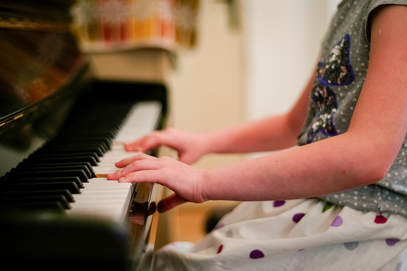 In 2016, the United Nations Educational, Scientific and Cultural Organization placed the music teaching method devised by 20th-century Hungarian composer and musicologist Zoltán Kodály on its UNESCO World Heritage List. The method’s ability to help preserve traditional folk music and make it easier to learn earned it a place on the list of Intangible Cultural Heritage practices. This experience-based teaching method is comprehensive in its teaching of how to read and write music as part of a basic musical curriculum. Singing, folk songs, and solfège - training the ear to understand pitch and pattern - are all central components of the curriculum. Kodály believed that learning to express oneself through singing the songs of one’s native land should be a foundation stone of a child’s musical education. The Kodály Method begins with helping children develop a sense of rhythm, and with teaching sight-reading and basic pitch through a series of hand signals that assist in demonstrating the relationships between musical notes. Kodály, a collaborator with his fellow Hungarian composer Béla Bartók, gathered and published major collections of Hungarian folk songs. He was an important figure in the spread of music education throughout Hungary. His method puts such strong emphasis on folk songs because he believed the genre possesses every quality necessary for inculcating a deep love of music in each child. 2. The Suzuki MethodThe Suzuki Talent Education Method starts music training early, with teachers striving to ensure that children learn mental focus and fine muscle control when they are young enough to make these skills an integral part of their personalities. This method involves parents in their children’s music education as co-educators and co-learners. Parents may learn to play an instrument before their child does, and they serve as reinforcing influences in the home for the lessons provided by the classroom teacher. The Suzuki Method concentrates on teaching music the same way that children acquire language: through listening and repeating. Every day, a Suzuki student listens to recordings of the same piece of music he or she is engaged in learning. Regular review allows students to incorporate new techniques into material already mastered. Reading music waits until the student has begun to master actually playing an instrument. The method’s inventor, Japanese violinist Dr. Shinichi Suzuki, based his method on the way children naturally acquire spoken language, calling his program a “mother tongue” approach. He emphasized the joy involved when children, parents, and teachers participate in studying music together. He was less concerned with training professional musicians than he was with enriching children’s lives so that their natural sensitivity and awareness of the world around them would blossom. 3. The Orff Method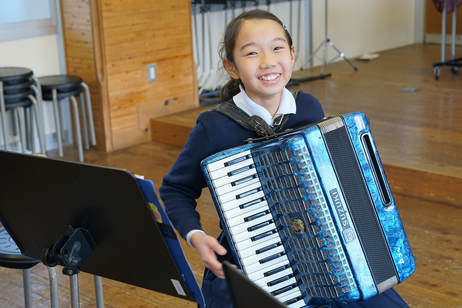 In the Orff Method, a child learns music through movement, singing, and acting out musically-themed stories. Students may use xylophones, drums, maracas, tone blocks, and numerous other percussion instruments to practice melodies within a learning framework that emphasizes the importance of play and fun. Teachers also encourage their students to compose their own pieces of music, and to practice improvising already-known pieces. Student improvisation is, in fact, one of the cornerstones of this method, as children have the chance to follow their own creative ideas during lessons. The Orff Method is known in the original German as Orff-Schulwerk (Orff Schoolwork), and also called simply “Music for Children.” The 20th-century composer Carl Orff is today best known for his 1937 oratorio Carmina Burana, a work that exemplifies his passion for strong rhythm and movement. He also assisted the gymnast Dorothee Günther in establishing a school focused on music, gymnastic training, and dance. During his time working with the school in the 1920s and 1930s, he came up with the ideas that would form the basis for his own musical education system. His book, entitled Orff-Schulwerk, which appeared in English translation as Music for Children, is based on the lessons he devised in collaboration with Gunild Keetman, a former student at the Günther school. The method is now taught in dozens of countries and is the subject of increasing interest around the world. Teachers using the Orff system create their own lessons based on the needs of their individual students. A typical lesson might begin with a teacher reading a poem aloud to the class, followed by students acting out a short drama based on the poem. The students then repeat the poem, this time adding sound by accompanying the story with musical instruments. 4. Dalkroze EurythmicsDalkroze Eurythmics is a music instruction method anchored in using ear-training, movement exercises, and improvisation to awaken and develop a child’s inborn gift for music and rhythm.
Created by Emile Jacques-Dalcroze, a 20th-century composer and professor of harmony in Geneva, Switzerland, the method is centered on its author’s tenet that rhythm-based, ear-training process cements musical concepts into a student’s muscle memory. This increases musical proficiency and builds a deep understanding of the physical demands on the musician. Dalcroze believed that students learn best through engagement of multiple senses, and that in order to gain a true understanding of his method, it is necessary to actually experience it. Dalcroze designed his method to teach music on a deep level, building an understanding of how it works to express a range of meaning and emotion, as well as how it relates to other arts and to the daily life of human beings. His work has been influential in the development of the performing arts and art therapy.  Sergei Prokofiev | Image courtesy Wikipedia Sergei Prokofiev | Image courtesy Wikipedia In 1936, shortly after returning to the Soviet Union after living in Europe for 18 years, composer Sergei Prokofiev created one of the world’s most memorable and enduring musical pieces: Peter and the Wolf. Ever since, Peter and the Wolf has entertained children while educating them about the sounds of key orchestral instruments. Here are a few notes on Peter, the Wolf, their creator, and how this charming suite continues to be adapted to the needs of today’s music students: An instrument defines each characterIn Prokofiev’s story, every character has a signature instrument and tune that define individual personality. Music teachers can help children learn to identify the four families of instruments the composer used in the piece: strings, woodwinds, brass, and percussion. Peter is portrayed by a joyous leitmotiv from a string quartet. Peter’s animal friends are the bird, portrayed by a lilting trill on the flute; the duck, depicted through the waddling gait of the oboe; and the cat, who slinks through the story accompanied by the lower registers of the clarinet. The chugging of the bassoon portrays Peter’s stern and scolding grandfather, and the rolling kettledrums bring a group of hunters to life. A series of sinister blasts on three French horns conveys the menace of the wolf. A rollicking, melody-filled adventure storyIn Prokofiev’s original plot, Peter is a Communist Young Pioneer who lives in the forest at the home of his grandfather. When Peter is walking through the forest, he encounters his friend the bird flying through the trees, the duck swimming, and the cat stalking the birds. Peter’s grandfather comes out of the house to warn his grandson about the dangerous wolf that lurks in the forest, but Peter has no fear. The wolf eventually comes slinking past Peter’s cottage and devours the duck. So Peter avenges his friend and captures the wolf. He struggles with his captive but ends up tying him to a tree. The hunters appear, wanting to kill the wolf, but Peter persuades them to take the wild creature to the zoo, borne along in a celebratory parade. Peter and the Wolf earned quick success and is still beloved today by children, teachers, and parents. Prokofiev called on his memories of his own childhood for scenes and characters. A composer’s life in light and shadowsBorn in 1891 in what is now Ukraine, Sergei Prokofiev learned to play the piano as a child. When he grew older, his mother moved with him to St. Petersburg so that he might continue his studies with instruction at a higher level. He began his formal studies at the St. Petersburg Conservatory and became a skilled pianist, composer, and conductor. As a young man, Prokofiev became a dedicated traveler, intent on soaking up a variety of musical styles on visits throughout Europe and even to the United States. After the devastations of the Russian Revolution and the First World War, he settled in Paris, but he missed his homeland so much that he returned to the Soviet Union in 1936. He composed Peter and the Wolf for the Moscow Central Children’s Theatre that same year. As his career blossomed, Prokofiev studied artistic influences including Igor Stravinsky, ballet impresario Sergei Diaghilev, and modernist artists such as Picasso. His oeuvre includes compositions for opera, ballet, and film. His symphonies and his concertos for piano, cello, and violin are notable among his works, as are his ballet Romeo and Juliet and his music for Sergei Eisenstein’s revered film Alexander Nevsky. As the Cold War began, Soviet authorities targeted the composer for exclusion from cultural life due to his supposed anti-traditionalist point of view. Because the United States feared Soviet aggression, Western audiences also cooled toward him. When he died in 1953—on the same day as dictator Joseph Stalin—few newspaper readers noticed. Disney works its magic on the storyThere have been numerous recordings of Peter and the Wolf since its debut. The most famous film version is undoubtedly the Walt Disney company’s animated short subject in full color. This film was presented as part of the 1946 feature-length compilation Make Mine Music, which included a variety of other cartoon shorts focused on making music education fun. In the Disney version, the animals have names and distinct personalities: The bird is named Sasha, the duck Sonia, and the cat Ivan, and each character livens things up through comedic routines. A beloved favorite in schools and theatersDozens of lesson plans about Peter and the Wolf have been created for students of all ages. Typical of these is one created for the Chicago Symphony Orchestra. In this program, students hear the story, then listen to musical excerpts to become familiar with individual characters and their accompanying instruments. This goal is to ensure that students will understand the storyline; be able to pick out each character’s musical motif and signature instrument; anticipate how each theme will sound in the composition; and identify individual instruments, as well as instrument families, by sound and tone color.
Local companies continue to stage imaginative productions of Peter and the Wolf as part of campaigns for music education. For example, Seattle Children’s Theatre put on a local playwright’s adaptation of the story in which an Emmy Award-winning musician recast Prokofiev’s classic musical motifs with contemporary music styles such as the Charleston, the tango, and the two-step shuffle. The creative team enhanced the production with puppetry, movement, and an expanded series of humorous incidents. The benefits of experiencing, learning about, and playing music don’t end with childhood. Not only does music enhance the lives of all adults, but it plays a major role in strengthening the cognitive abilities of seniors in particular. Scientists—and music teachers—have long understood that music stimulates parts of the brain responsible for higher mental and emotional functions. Here is an outline of how that works: 1. Greater mental acuity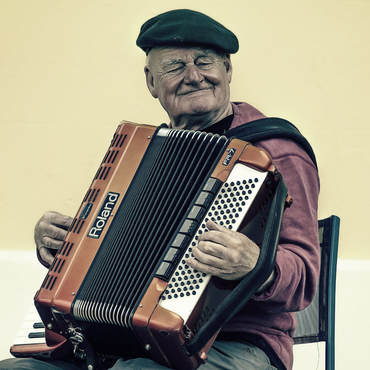 The early benefits that accrue from studying a musical instrument can make your brain more resilient over the course of your life. These benefits have even been shown to help people overcome multiple deficits that come with normal aging. Older adults who played a musical instrument during their childhood tended to hold onto the early gains in brain functioning. A study conducted by the Emory University neurology department demonstrated that seniors who played a musical instrument for at least 10 years scored higher on tests of memory and general intellectual ability than did their counterparts who did not have any musical training. When older adults take part in music and arts programming, they also experience improvements in their overall physical and social health. This participation strengthens their sense of being part of a community, their ability to form bonds with others, and their sense of personal identity. And when seniors participate in creating music or even in listening experiences, they also tend to experience more satisfaction with their quality of life and well-being. Music lessons may also play a role in preventing some aspects of physical aging. One group of researchers found that senior musicians’ auditory cortexes—the part of the brain involved in the sense of hearing—did not age as much as those of their non-musical counterparts. These seniors were therefore less likely to experience hearing loss with age. Experts point out that even for those who begin musical training far beyond childhood, similar benefits can occur. 2. Improved memory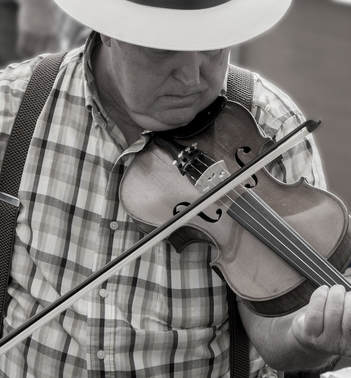 In one recent study at the University of California, Irvine, researchers determined that after listening to classical music, adults with Alzheimer’s disease showed improvements in their performance on memory tests. Another study showed that older adults between the ages of 60 and 85 who took half-hour piano lessons every week and practiced for an additional three hours demonstrated significant gains in their ability to memorize and assimilate information after only a few months. These older adults went into the study with no prior serious musical experience. Additional research has shown that background music had a positive effect on older adults’ memories. This held true for both semantic memory—dealing with facts—and episodic memory—dealing with personal experiences—as well as for the ability to rapidly absorb and understand new information. In this study, the test subjects were adults who were not musicians and who had a mean age of 69 years. In the study, researchers used recordings of pieces by composers Mozart and Mahler, and introduced a white noise control segment and another control segment without music. They tested the subjects’ performance for each of these four segments, with the musical pieces and the white noise played as the background both prior to and during tests that included memorizing lists of words and creating as many words as possible beginning with a particular letter. By listening to both Mozart and Mahler, seniors demonstrated improved performance on examinations of semantic and episodic memory. Mozart, in particular, fostered an increase in the speed of mental processing. On the other hand, Mahler did not seem to aid in mental processing speed over the white noise or the “music-less” segments of the test. One reason why the seniors performed better while listening to Mozart may be that they identified the composer’s music as being more conducive to feelings of happiness. They found Mahler, an early 20th century composer noted as a pioneer in the incorporation of massive dissonances in his music, to be sadder in tone. The researchers theorized that when their test subjects felt happier, their speed of mental performance increased. They also noted that the pieces by both composers used in the test lacked lyrics and theorized that the distraction of listening to lyrics during the testing might have impaired memorization. 3. Reduced stressParticipation in music-related activities has also been shown to decrease stress levels in adults. An analysis of hundreds of studies has demonstrated music’s ability to reduce feelings of depression and produce a more calm, focused state of mind in adults of all ages. When adults listen to a musical performance or play music themselves as part of a group, their levels of the chemicals oxytocin and dopamine tend to increase. Oxytocin in the body promotes feelings of trustfulness and closeness to others, while increases in dopamine levels are associated with better concentration and a general elevation in mood.
Other research even finds a correlation between listening to music and experiencing a reduction in pain. For example, in one study, adults demonstrated a reduction in chronic pain symptoms by more than 20 percent and in feelings of depression by as much as 25 percent when listening to music. |
Photo used under Creative Commons from Marina K Caprara
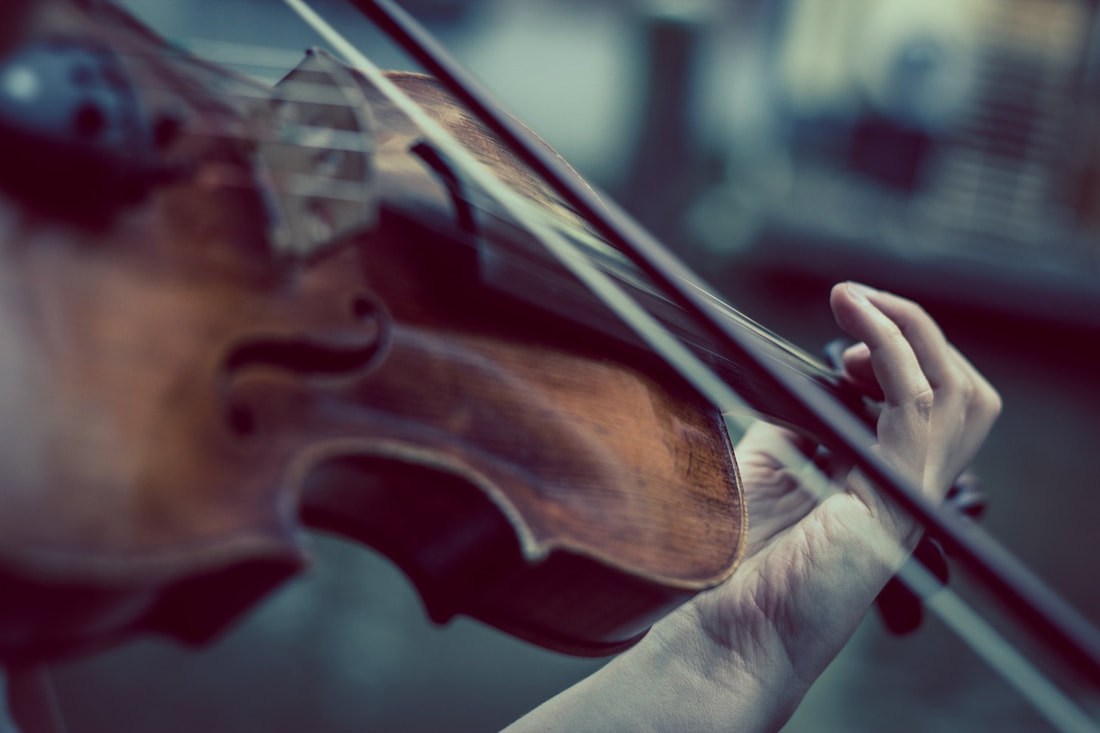
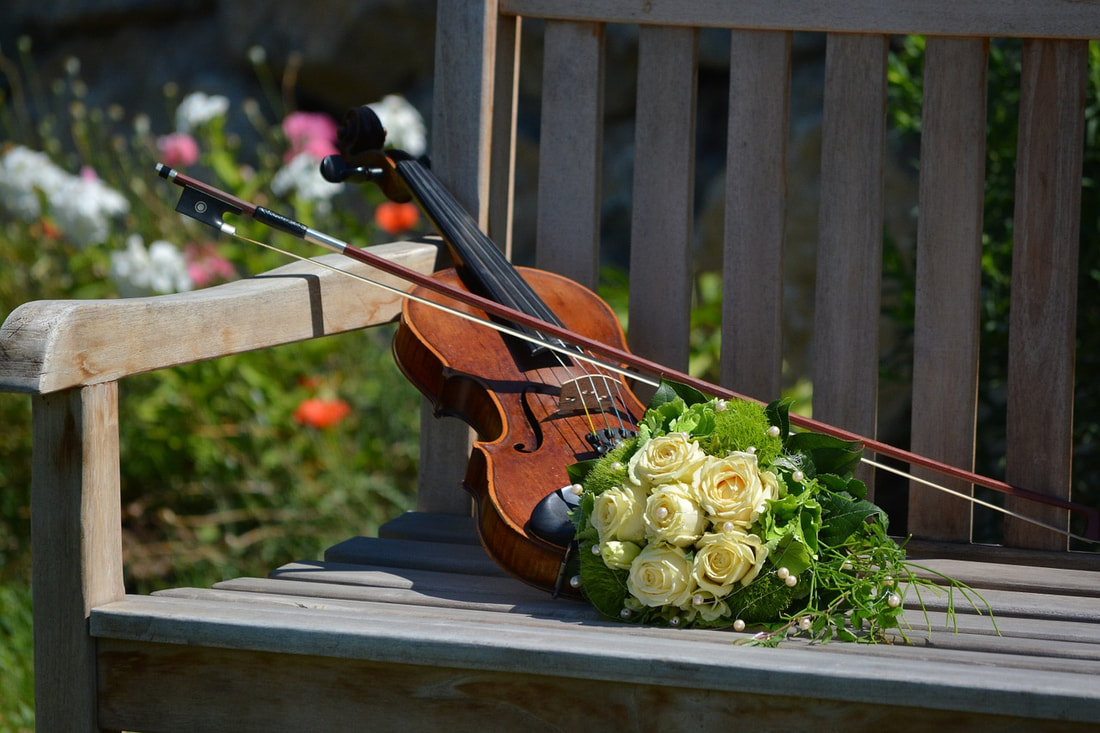
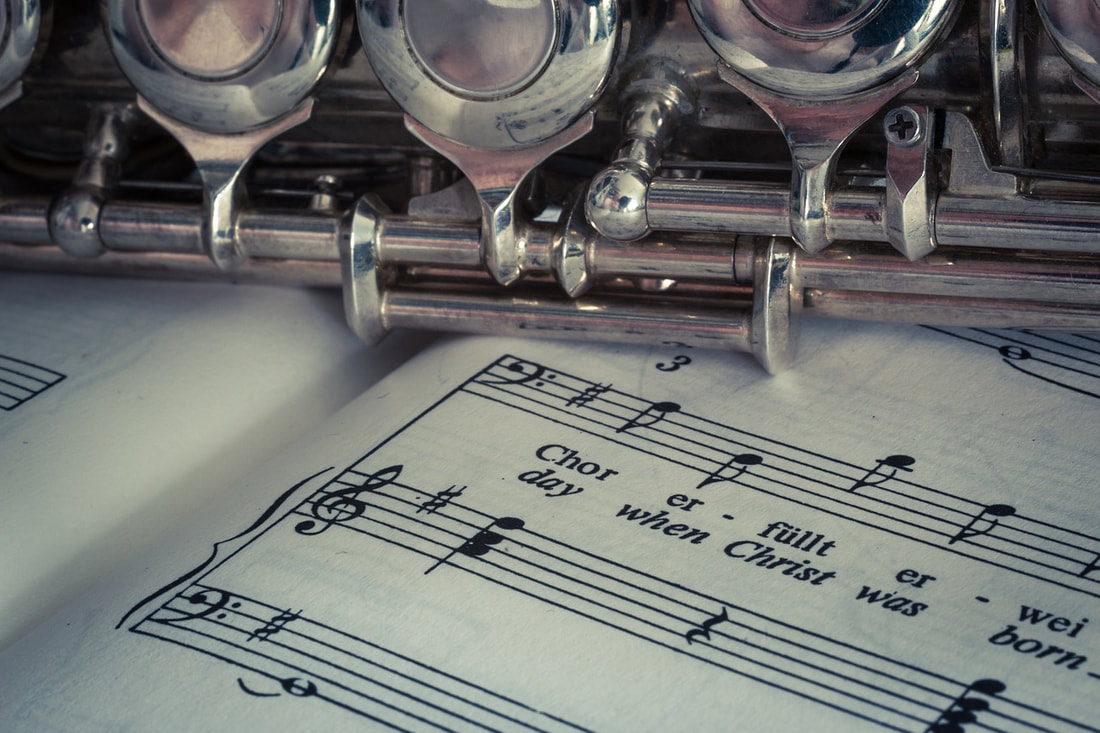
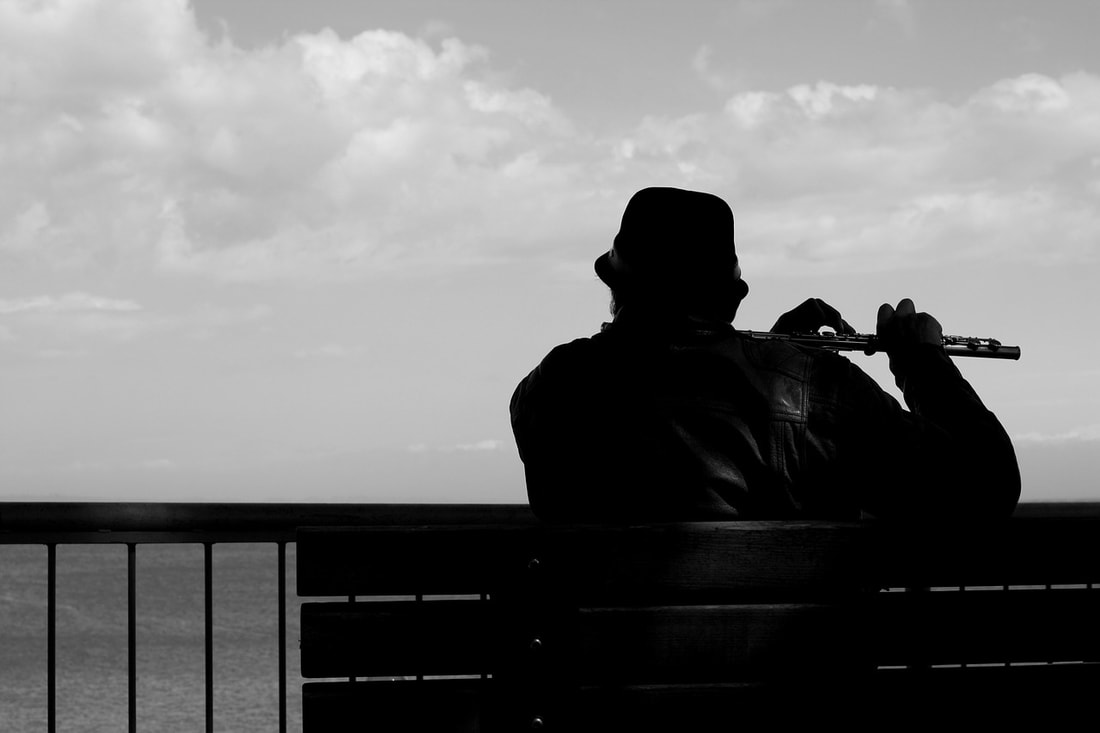
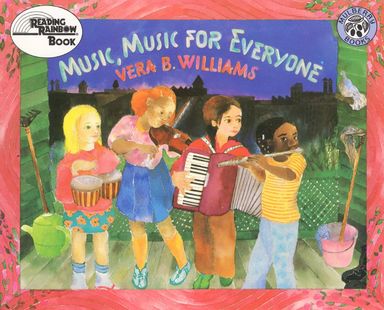
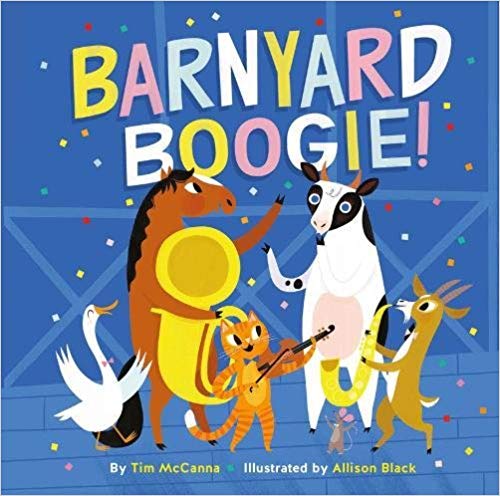
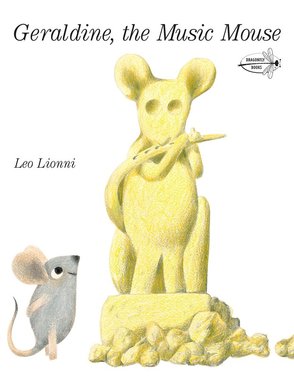
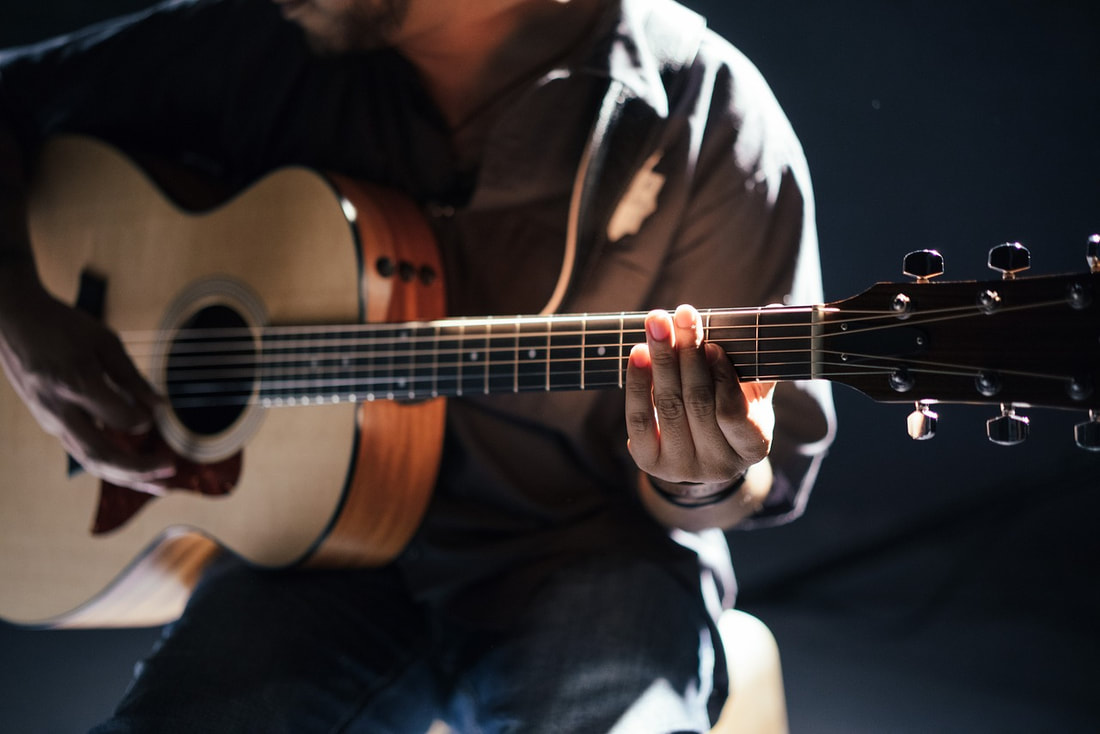
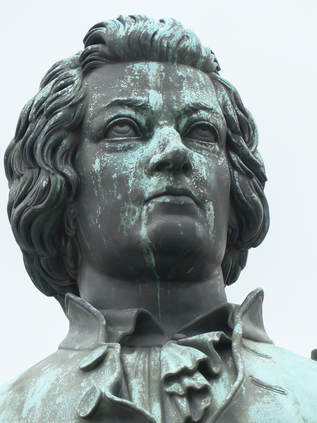
 RSS Feed
RSS Feed
